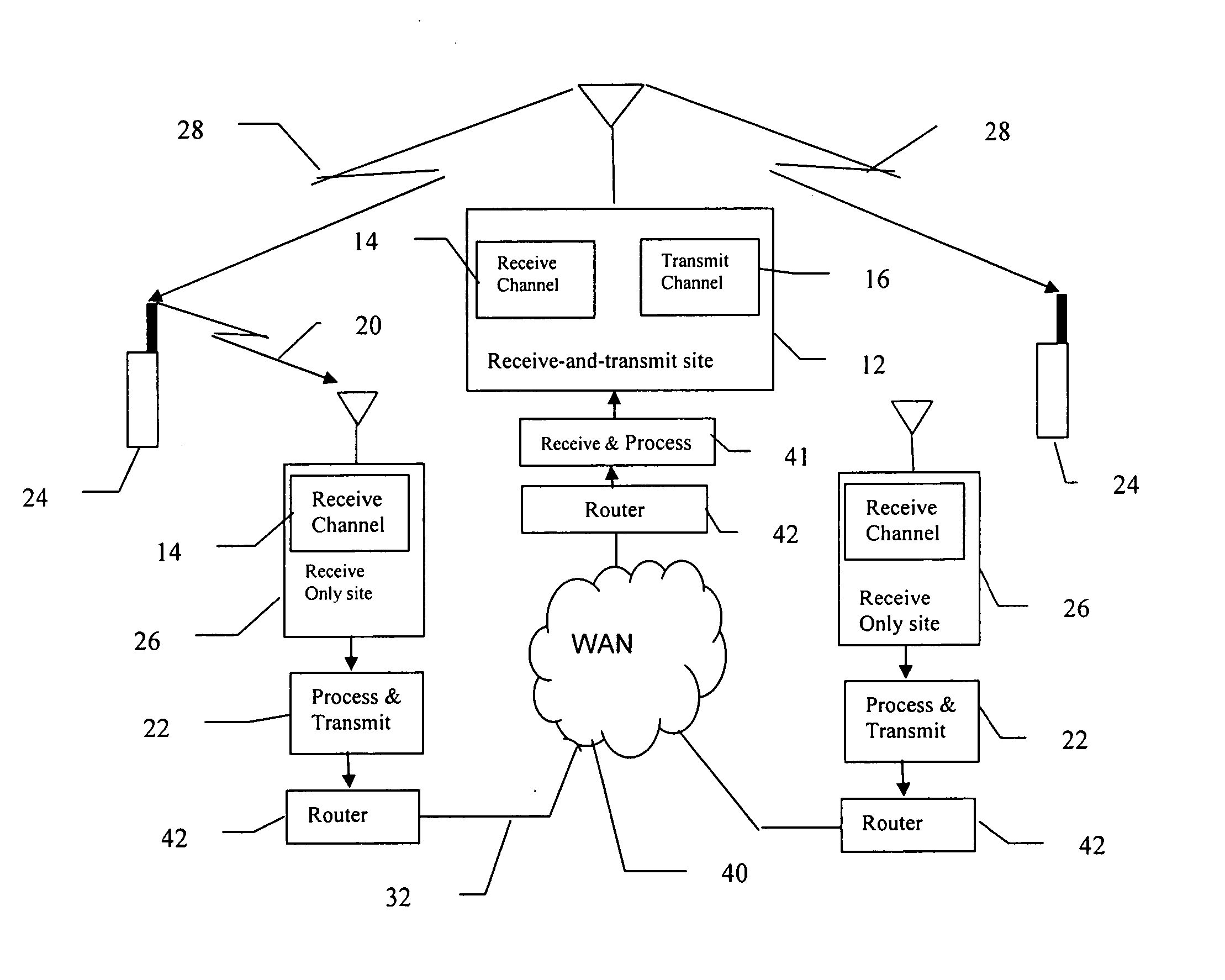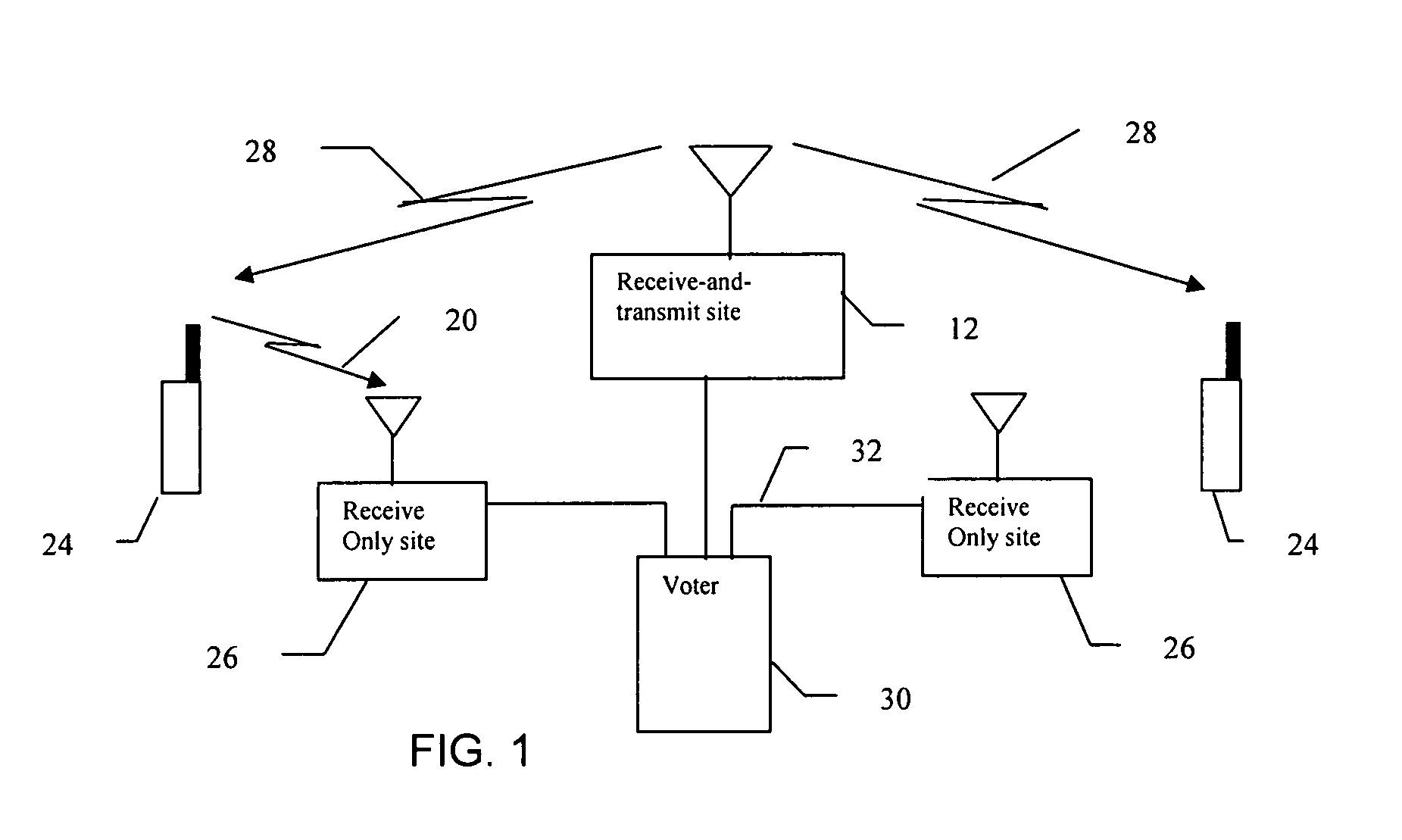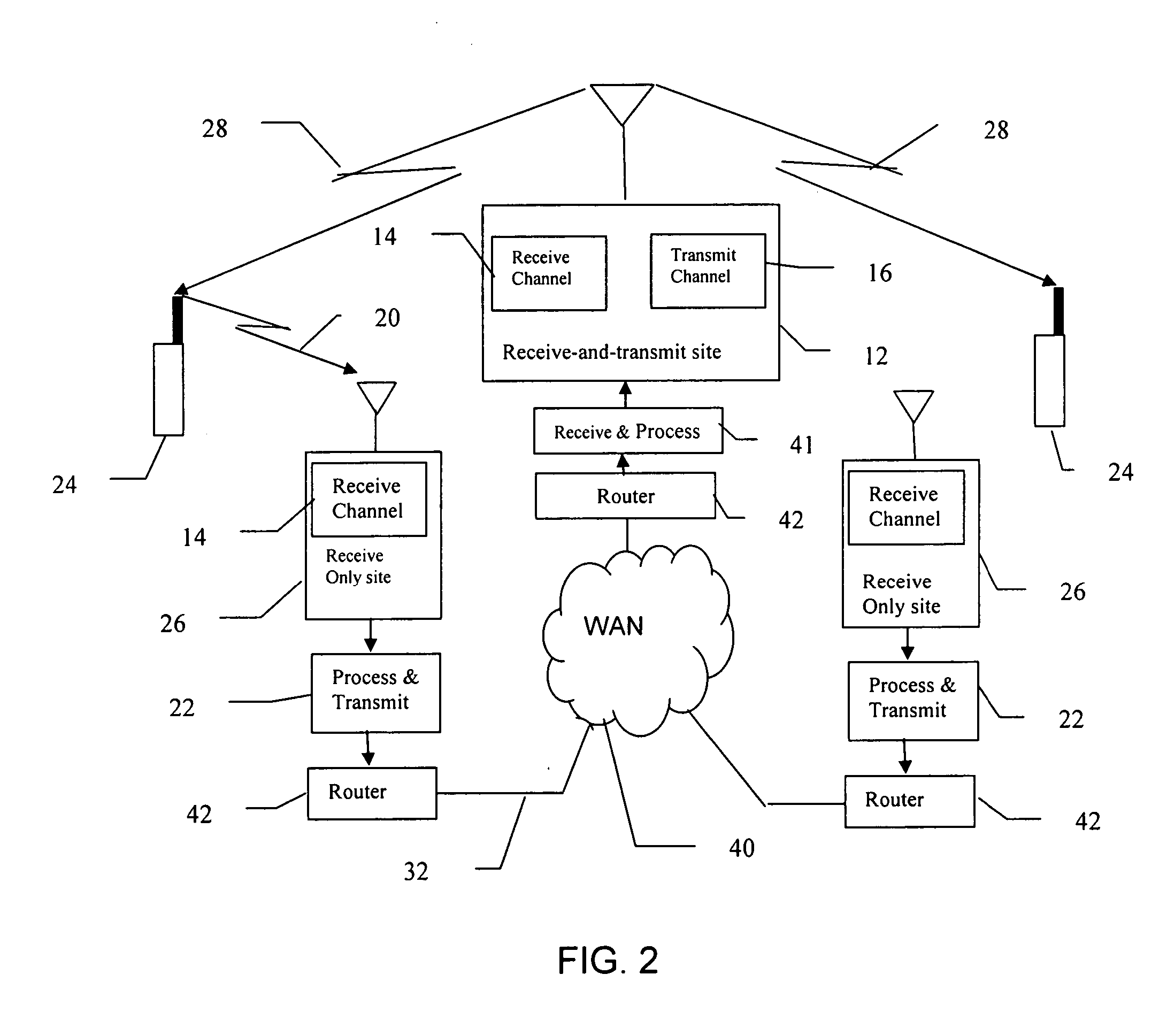Distributed voting system and method for land mobile radio system
a voting system and land mobile radio technology, applied in the field of radio systems, can solve the problems of reducing the service life of the rf transceiver, the weaker transmission of the mobile and portable transceiver, and the inability to provide useful, reliable communications. the effect of latency
- Summary
- Abstract
- Description
- Claims
- Application Information
AI Technical Summary
Benefits of technology
Problems solved by technology
Method used
Image
Examples
Embodiment Construction
[0015] The present invention relates to an improved voting method and apparatus for use in Land Mobile Radio (LMR) systems that will now described in more detail.
[0016] In the preferred embodiment of the present invention, each main transmitting site in the LMR system includes a receive-and-transmit site and associated receivers, transmitters and processing equipment. Each main transmitting site is also associated with one or more remote receiving sites, each of which includes a receive-only site and associated receivers and processing equipment. Communication between the main transmitting site and the remote sites includes an Internet Protocol (IP) enabled network. Each receiver in the LMR system that receives a transceiver transmission signal at a usable strength estimates the quality of the received transmission signal. The receiver combines its estimation of quality and the received transmission signal into a packet which is sent over a network to the main transmitting site ass...
PUM
 Login to View More
Login to View More Abstract
Description
Claims
Application Information
 Login to View More
Login to View More - R&D
- Intellectual Property
- Life Sciences
- Materials
- Tech Scout
- Unparalleled Data Quality
- Higher Quality Content
- 60% Fewer Hallucinations
Browse by: Latest US Patents, China's latest patents, Technical Efficacy Thesaurus, Application Domain, Technology Topic, Popular Technical Reports.
© 2025 PatSnap. All rights reserved.Legal|Privacy policy|Modern Slavery Act Transparency Statement|Sitemap|About US| Contact US: help@patsnap.com



